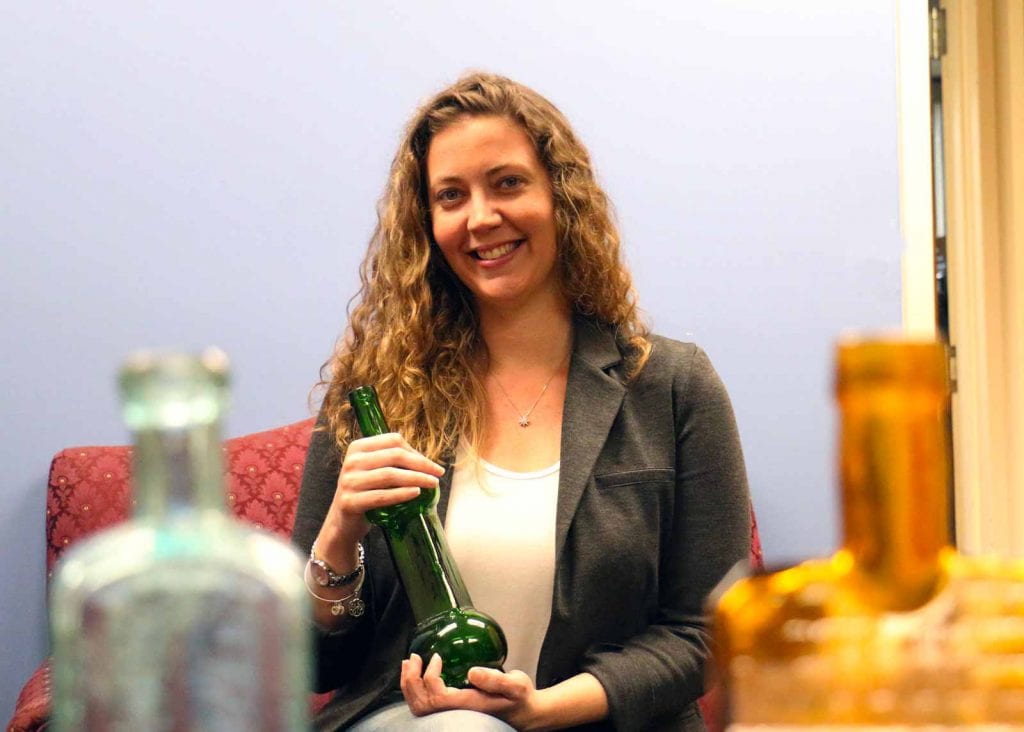Bottle Collection Sparks Lifelong Passion for Archaeology

Amanda Groff was certain in high school she had found the lost city of Atlantis.
It was plotted on a map right next to all the ancient sites she would visit as a future archaeologist.
“I was fortunate to grow up with a lot of curiosity in me. And I was doubly fortunate to have someone who fostered that curiosity in me,” says Groff, Ph.D., an associate lecturer of Anthropology who specializes in archaeology and bioarchaeology.
Her mentor was her great-uncle, Taylor Hardwick, a renowned architect whose work in Jacksonville includes the Friendship Fountain and Haydon Burns Library. To Groff, though, he was the quirky uncle who lived in a house crammed with fascinating treasures, including an old glass bottle collection.
The bottles — some dating back to the mid-19th century — found their way to Hardwick’s house from a variety of sources, from auctions to garage sales. Classifying the bottles in the pre-Internet days took hours of poring through books, starting with broad clues like the color of the glass or a seam that indicated the bottle was molded, then gradually narrowing the search to the foundry.
It was perfect training for the process that Groff still follows today as an archaeologist. As she explains it, archaeology is a lot less Indiana Jones, and a lot more patiently flipping through books looking for clues.
“It’s the mystery that makes me want to investigate,” Groff says. “You find a part of an artifact that’s unique and that’s what gives you a clue to start with.”

Some of the antique bottles from Groff’s collection.
In fact, Groff used this exact process when studying Maya civilization as a graduate student. One of the gods depicted on the pottery they were uncovering didn’t fit into the traditional pantheon for that region. But he looked familiar to Groff. By doing some digging — both literal and metaphorical — Groff was able to place the god’s origins to a different Mexican civilization and establish a new link between the two cultures.
It’s those type of “aha” moments that Groff tries to supply her students. She inherited the bottle collection from her uncle after he died, and she keeps a couple of her favorites in her office on campus. Like the artifacts of her trade, they are reminder of a special person who has moved on from this life. And they continue to inspire her passion for unraveling mysteries.
“When they were contemporary, these bottles were really mundane. But to an archaeologist something that seems mundane contains so much information,” Groff says.
